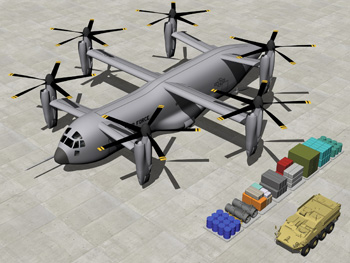INDIAN ARMED FORCES CHIEFS ON OUR RELENTLESS AND FOCUSED PUBLISHING EFFORTS

The insightful articles, inspiring narrations and analytical perspectives presented by the Editorial Team, establish an alluring connect with the reader. My compliments and best wishes to SP Guide Publications.

"Over the past 60 years, the growth of SP Guide Publications has mirrored the rising stature of Indian Navy. Its well-researched and informative magazines on Defence and Aerospace sector have served to shape an educated opinion of our military personnel, policy makers and the public alike. I wish SP's Publication team continued success, fair winds and following seas in all future endeavour!"

Since, its inception in 1964, SP Guide Publications has consistently demonstrated commitment to high-quality journalism in the aerospace and defence sectors, earning a well-deserved reputation as Asia's largest media house in this domain. I wish SP Guide Publications continued success in its pursuit of excellence.
- Indian Air Force Aims for Full Indigenous Inventory by 2047 — Air Chief Marshal A.P. Singh
- General Upendra Dwivedi takes over as the Chief of the Army Staff
- Rajnath Singh assumes charge as Defence Minister for the second consecutive term
- Admiral Dinesh K. Tripathi assumes Command of the Indian Navy as 26th Chief of the Naval Staff
- Prime Minister witnesses 'Bharat Shakti' – a Tri-Services Firing and Manoeuvre Exercise in Pokhran, Rajasthan
Vertical-lift aircraft design expected soon

The military services expect to unveil performance specifications this summer for a new joint vertical-lift aircraft, Major General William T. Crosby told Congressmen.
Crosby, director of the Army’s Programme Executive Office Aviation, testified to the House Armed Services Committee, subcommittee on Tactical Air and Land Forces at a hearing on rotorcraft modernisation programmes. His counterparts from the Navy, Marine Corps and Air Force also testified.
Crosby said a consortium, which includes industry partners, has been working with the military on ideas for a joint vertical-lift aircraft. Two demonstrator aircraft have been developed, wind-tunnel tests have been conducted and other studies completed.
A joint attack-utility variant is the first aircraft the military will invest in under the programme, Crosby said.
“Some people are saying it’s going to be rotary-wing. We don’t know that…” Crosby said. “It may be a tilt-rotor of some sort that we’re going to go to. But based on the wind-tunnel studies and the demonstrators that we’ve done and the input of this team, including the consortium, we hope to have a deliverable this summer of a specification that will guide us towards what the next step will be that we’re going after.”
The effort to design a next-generation aircraft has been called the joint multi-role programme. This Army-led programme has included input from the Office of the Secretary of Defence, all military services, including the Coast Guard, Special Operations Command, NASA, and others.
Those involved envision the aircraft having vastly improved avionics, electronics, range, speed, propulsion, survivability, altitudes and payload capacity. Some have said it should be able to sustain speeds in excess of 170 knots, have an overall combat range greater than 800 kilometres and be able to hover with a full combat load at altitudes of 6,000 feet in 35-degree heat.
Under questions about industry reps being included in the consortium planning the aircraft, Crosby defended this partnership, stating the consortium has been primarily a technology advisory panel. “There was no commitment to award contracts of scope or anything like that,” Crosby said. “What we were trying to preclude is duplication, where we had a bunch of people going after the same technologies.
“The other thing is, we in the government, we don’t do a lot of development, cutting-edge development. Our partners in industry, that’s what they do. So we wanted to bring them on to look at these enabling technologies we needed to go to the future, to prevent us from going down a ‘rat hole’ and getting after something that really wasn’t achievable.”
Modernisation is more of a challenge today because technology is turning over so fast, Crosby said. As science and technology dollars become tighter, the Army may rely more on consortiums to help develop new technologies for its future aircraft, he inferred.
A future vertical-lift study will soon be released to provide a way ahead for aviation modernisation, Crosby said. “It lays out a roadmap for all of us services together looking forward. It identifies kind of a scalable architecture of rotary-wing or future vertical lift platforms.”
Another programme Crosby cited as showing a lot of potential is the improved turbine engine programme, or ITEP. This programme’s objective is to develop technologies for a 3,000-horespower engine that reduces fuel consumption for the AH-64 Apache and UH-60 Black Hawk helicopters.
“What a great capability,” Crosby said of the ITEP tech demonstrators. He said they were demonstrating “all of the improvements that we’re asking for,” including a 30 per cent increase in power and a 25 per cent decrease in fuel.
The improved turbine engine programme is expected to come out of its science and technology phase this summer, Crosby said, adding that the Army intends to continue carrying two vendors for the programme if budget realities permit.





